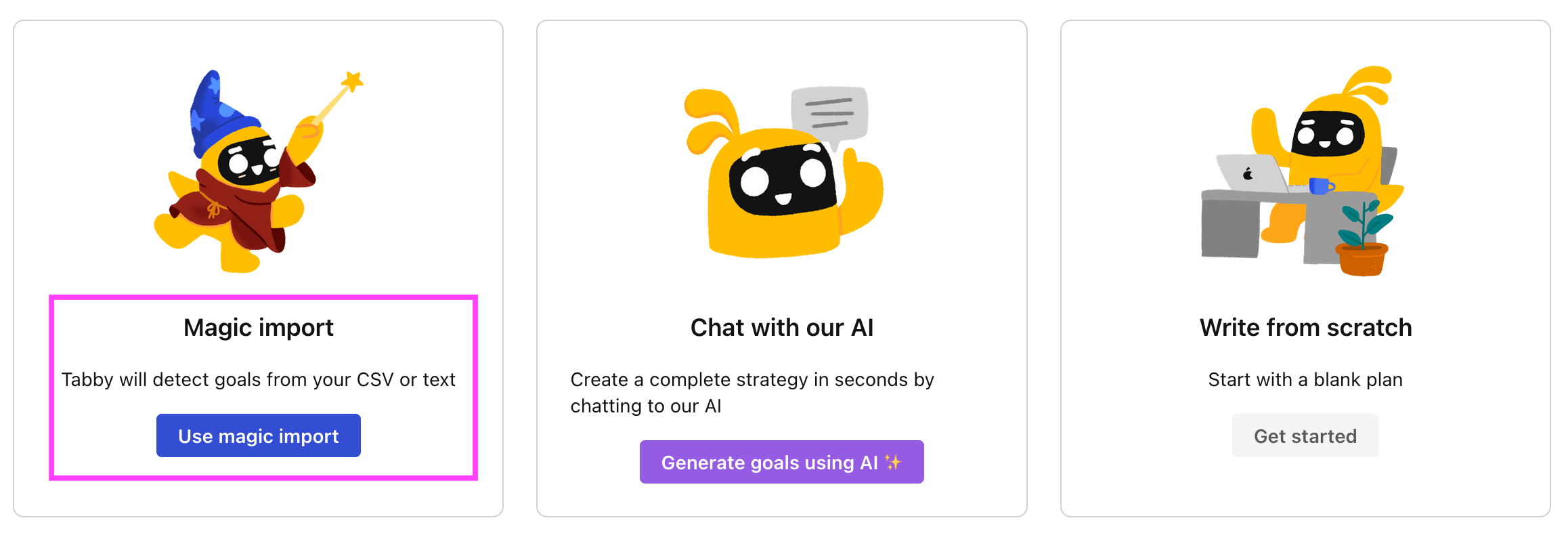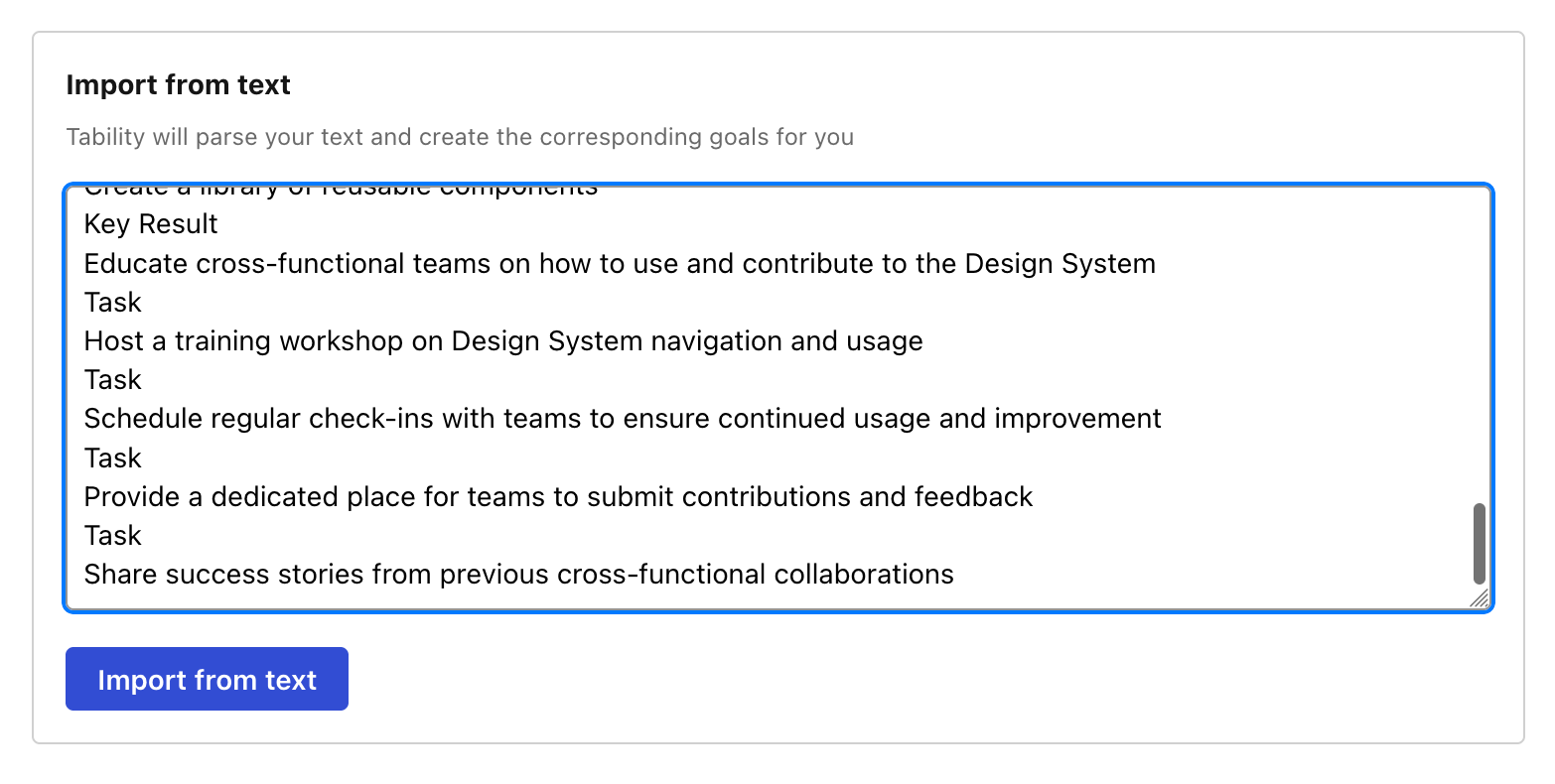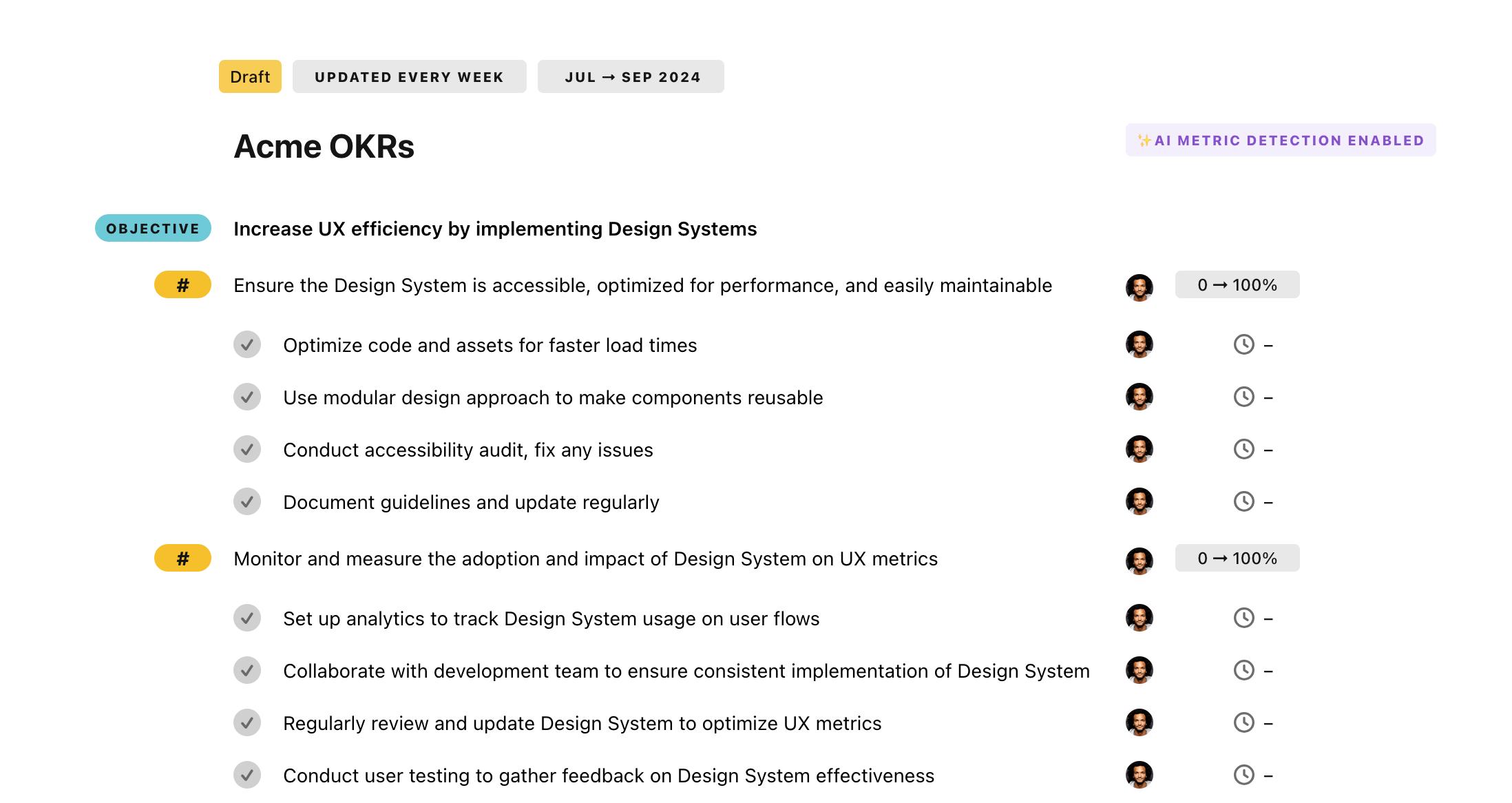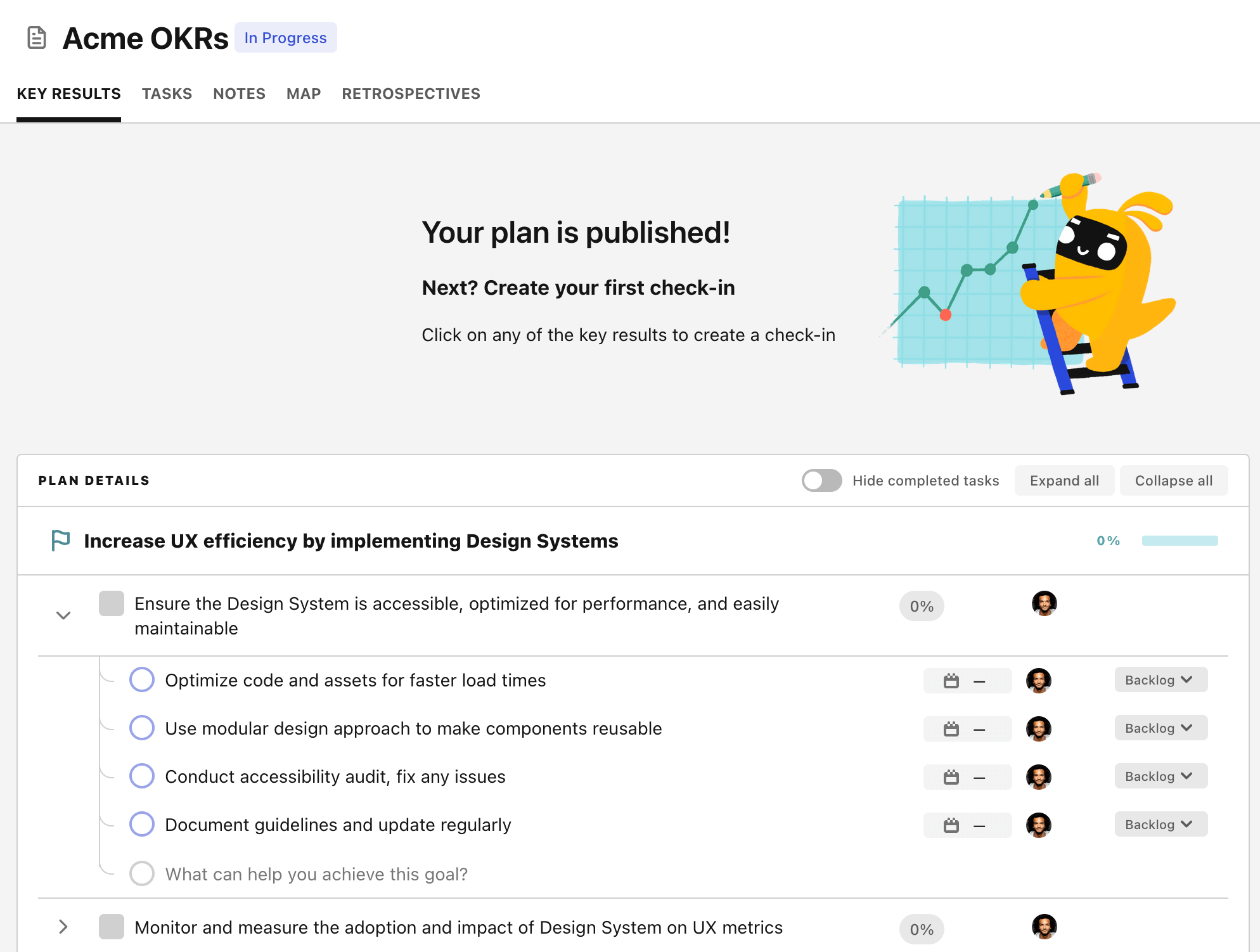OKR template to achieve consistent 90% uptime for ATM machines
Your OKR template
The first objective is to improve the repair speed of the rapid response team by 30%. This will be achieved by reducing employee fatigue through job rotation, offering advanced training on efficient repair strategies, and providing the latest technology and tools for faster repairs.
The second objective targets a 50% decrease in ATM downtime incidents. This goal is to be reached by setting up regular maintenance routines for all ATM machines, developing an efficient malfunction prediction system, and improving the reliability of the ATM's hardware and software.
The final objective focuses on the two-weekly implementation of preventive maintenance on all ATMs. To achieve this, each maintenance session will be recorded for feedback, preventive upkeep will be scheduled bi-weekly for all ATMs, and technicians will be trained to carry out regular ATM maintenance.
ObjectiveAchieve consistent 90% uptime for ATM machines
KRImprove rapid response team's repair speed by 30%
Establish a jobs rotation to reduce employee fatigue
Implement advanced training on efficient repair strategies
Introduce latest technology and tools for quicker repairs
KRReduce ATM downtime incidents by 50%
Implement regular maintenance routines for all ATM machines
Develop an efficient malfunction prediction system
Improve ATM hardware and software reliability
KRImplement preventive maintenance every two weeks on all ATMs
Monitor and record each maintenance session for feedback
Schedule bi-weekly preventive maintenance for all ATMs
Train technicians to perform regular ATM upkeep
How to edit and track OKRs with Tability
You'll probably want to edit the examples in this post, and Tability is the perfect tool for it.
Tability is an AI-powered platform that helps teams set better goals, monitor execution, and get help to achieve their objectives faster.
With Tability you can:
- Use AI to draft a complete set of OKRs in seconds
- Connect your OKRs and team goals to your project
- Automate reporting with integrations and built-in dashboard
Instead of having to copy the content of the OKR examples in a doc or spreadsheet, you can use Tability’s magic importer to start using any of the examples in this page.
The import process can be done in seconds, allowing you to edit OKRs directly in a platform that knows how to manage and track goals.
Step 1. Sign up for a free Tability account
Go tohttps://tability.app/signup and create your account (it's free!)
Step 2. Create a plan
Follow the steps after your onboarding to create your first plan, you should get to a page that looks like the picture below.

Step 3. Use the magic importer
Click on Use magic import to open up the Magic Import modal.
Now, go back to the OKR examples, and click on Copy on the example that you’d like to use.

Paste the content in the text import section. Don’t worry about the formatting, Tability’s AI will be able to parse it!

Now, just click on Import from text and let the magic happen.

Once your example is in the plan editor, you will be able to:
- Edit the objectives, key results, and tasks
- Click on the target 0 → 100% to set better target
- Use the tips and the AI to refine your goals
Step 4. Publish your plan
Once you’re done editing, you can publish your plan to switch to the goal-tracking mode.

From there you will have access to all the features that will help you and your team save hours with OKR reporting.
- 10+ built-in dashboards to visualise progress on your goals
- Weekly reminders, data connectors, and smart notifications
- 9 views to map OKRs to strategic projects
- Strategy map to align teams at scale